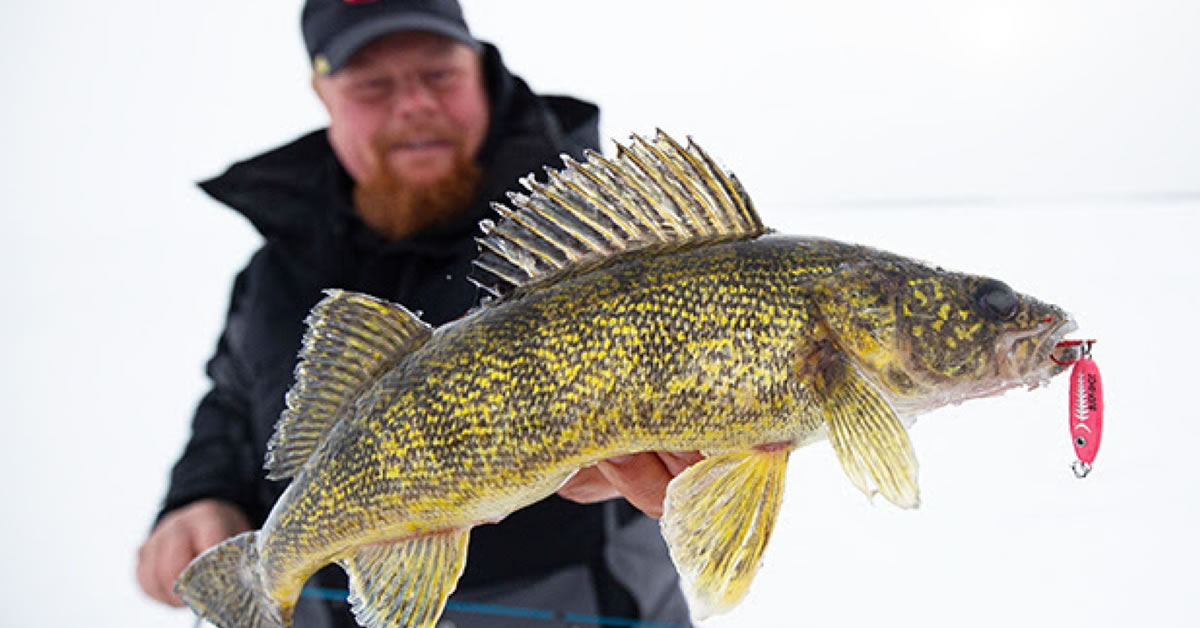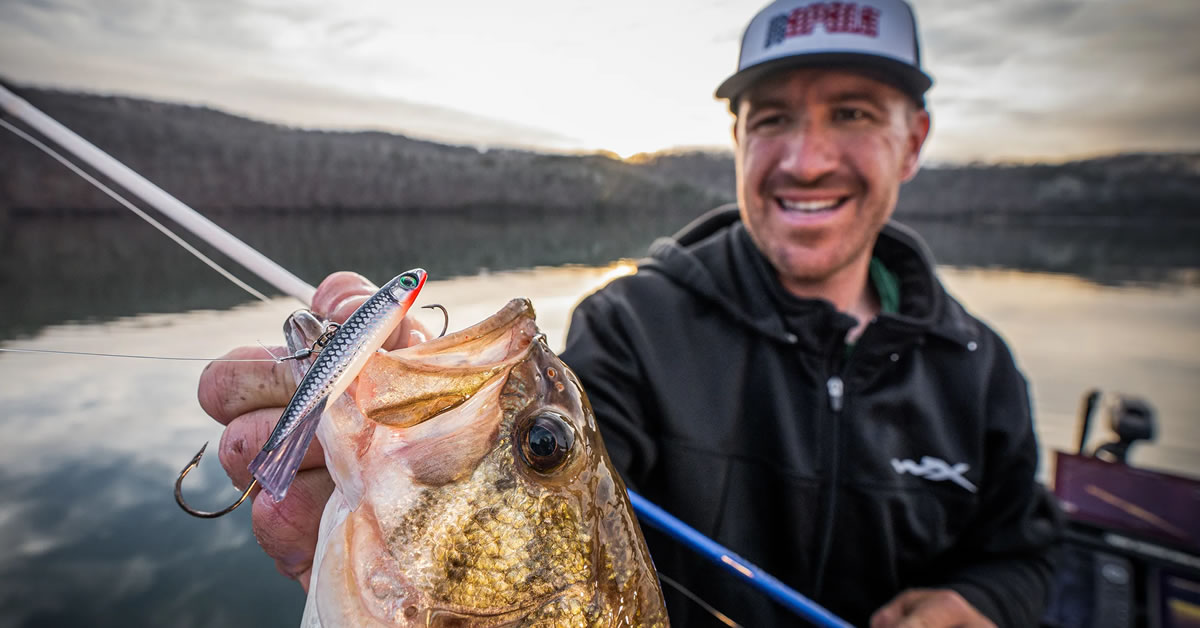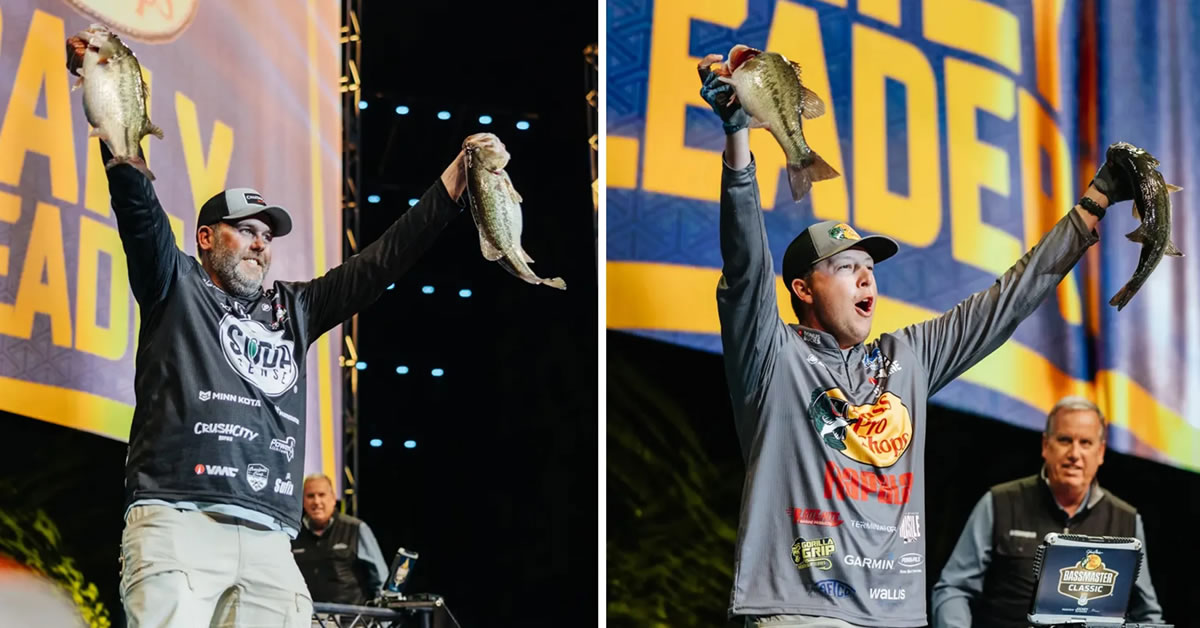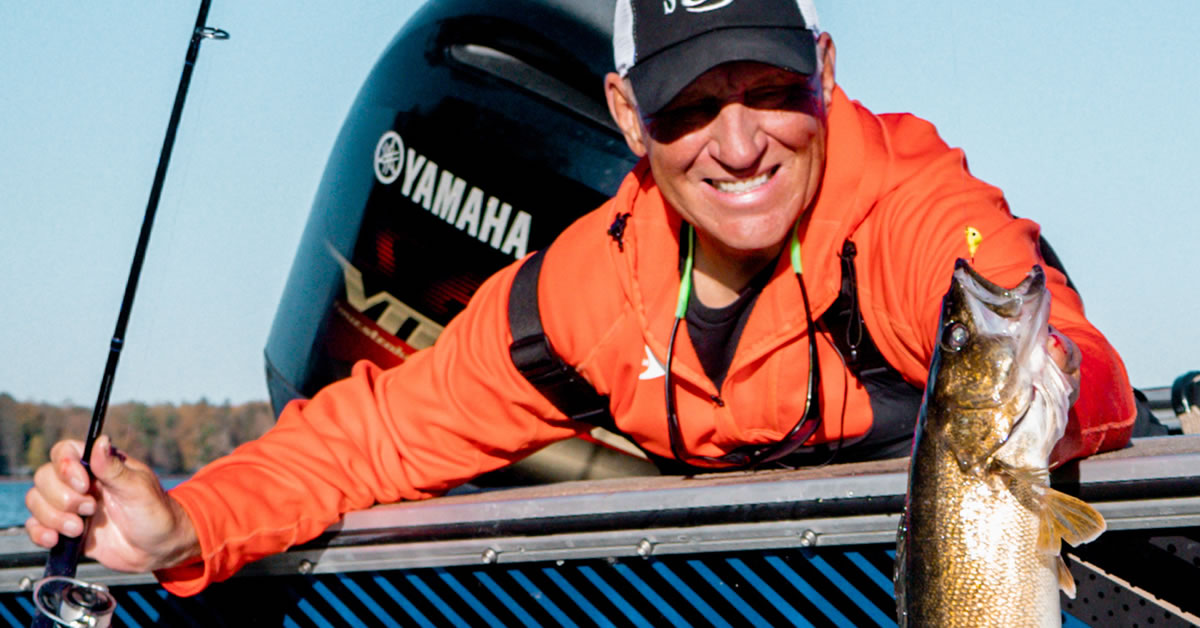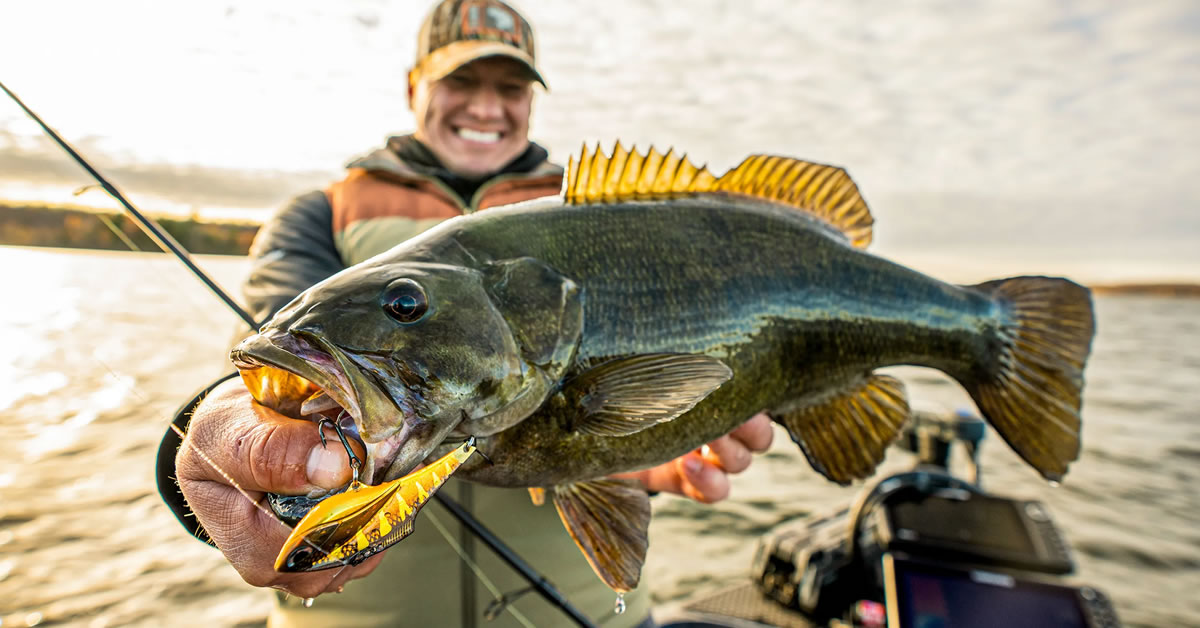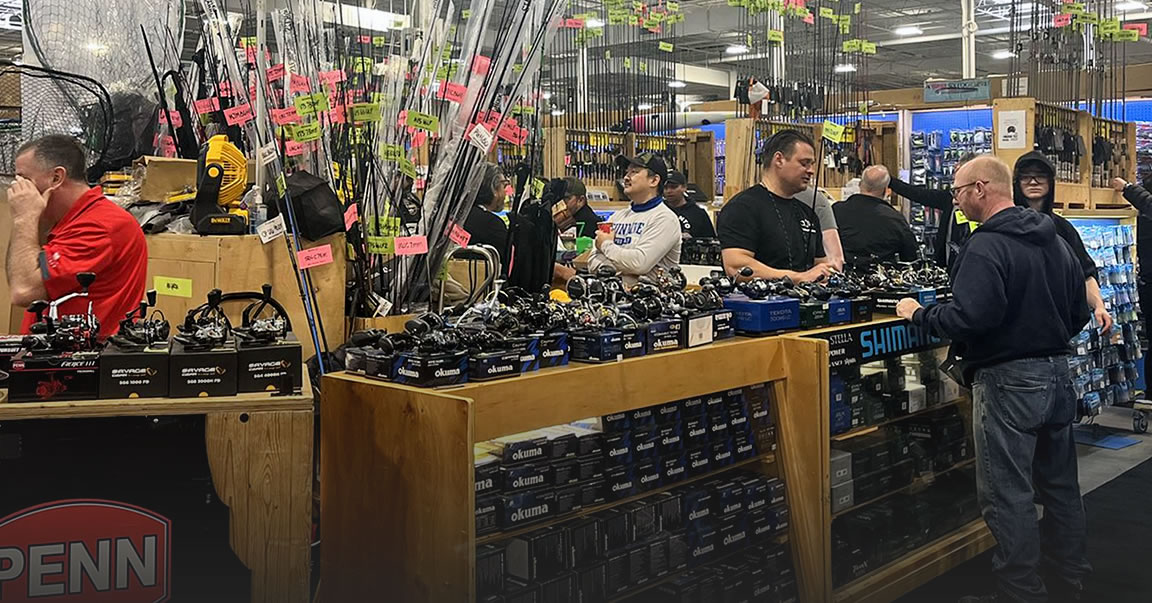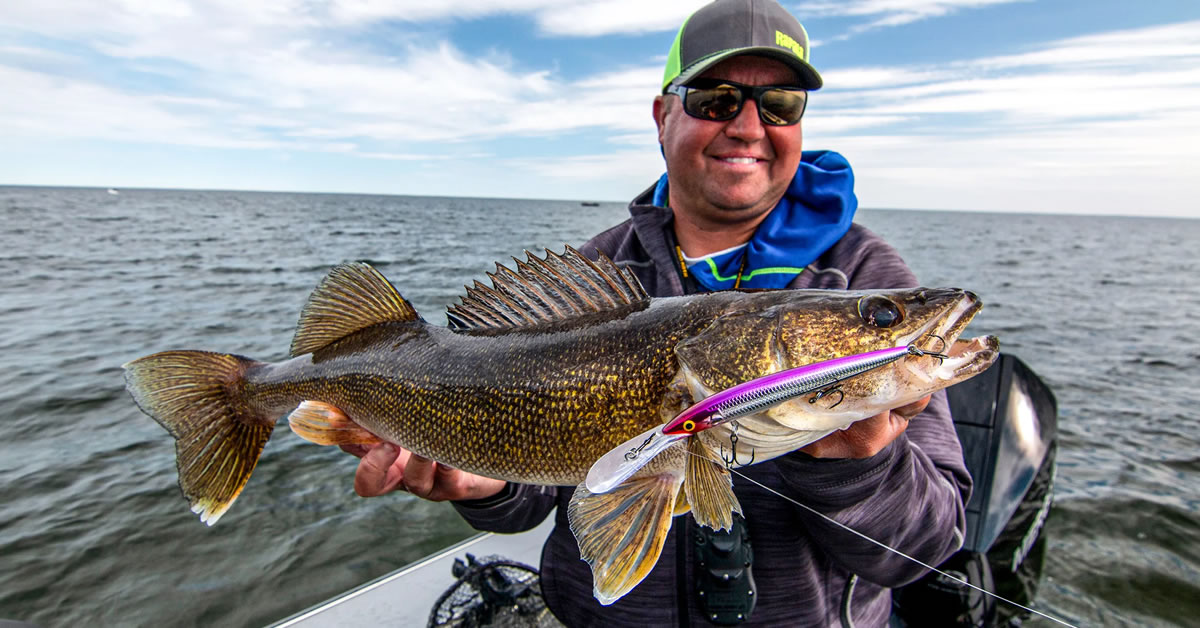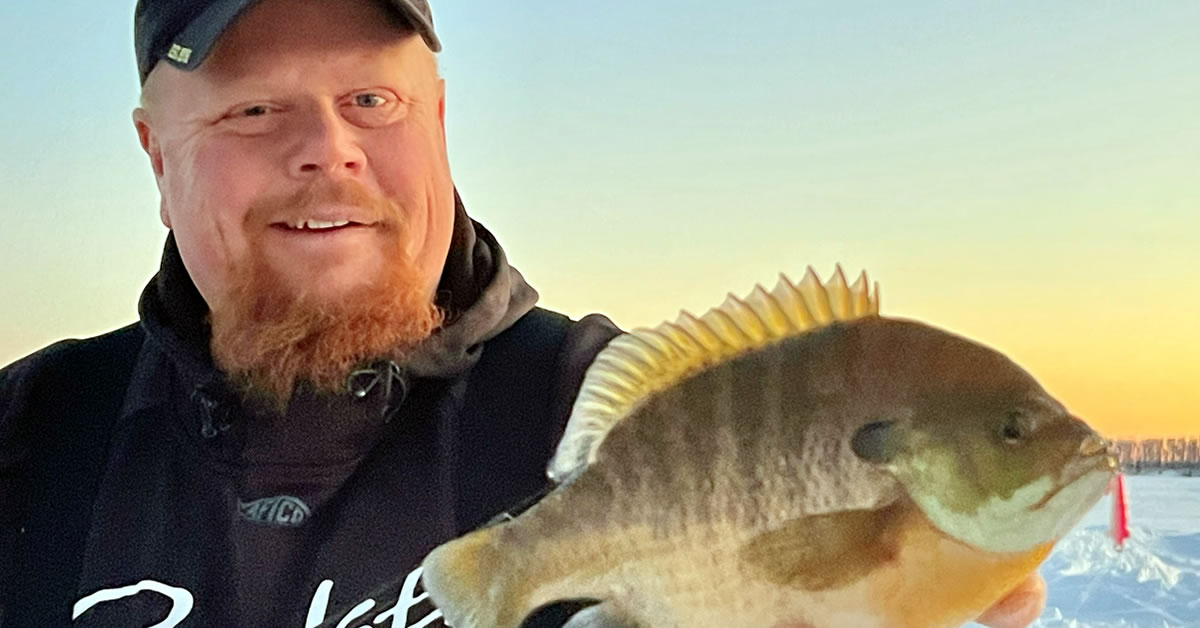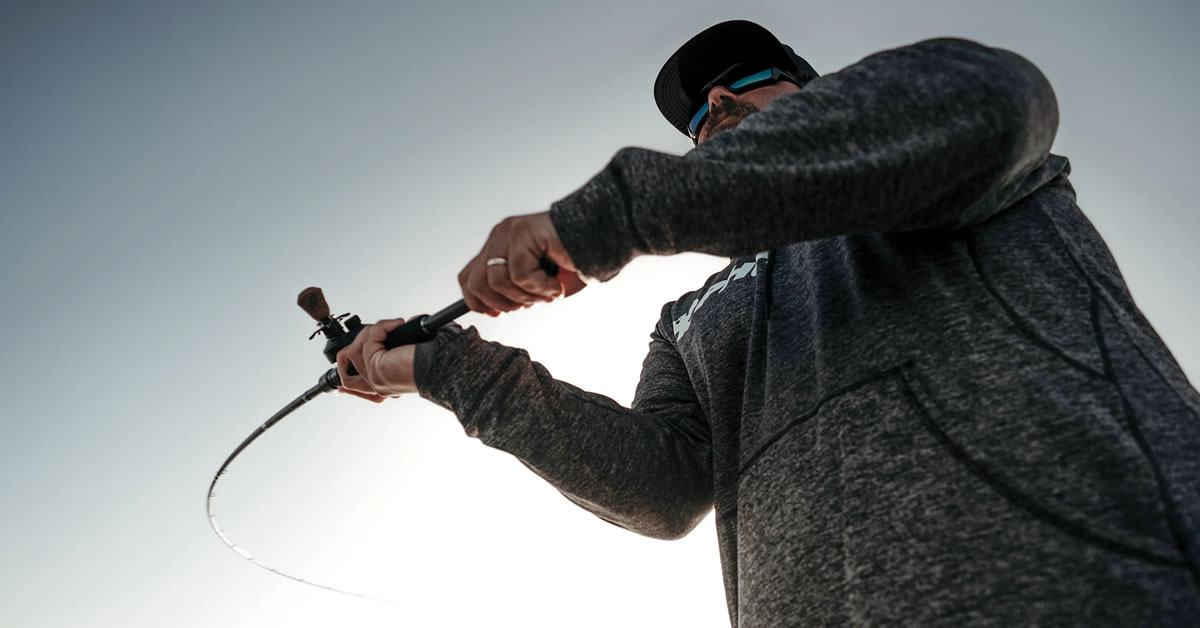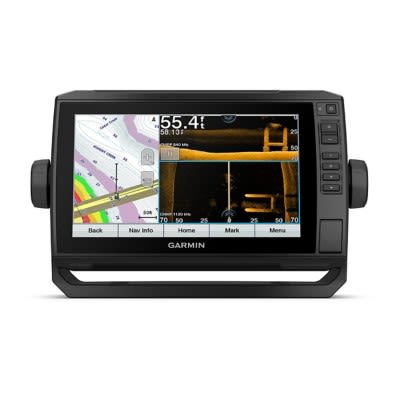Give Rivers a Try for Great Smallie Fishing
by Bill Schultz
.jpg) In Wisconsin we are blessed with hundreds of wonderful rivers and streams loaded with my favorite, smallmouth bass. I've spent all or part of hundreds of days wading smaller rivers across southern Wisconsin, as well as hitting a variety rivers around the state also by foot or in one of my Wilderness Systems kayaks.
In Wisconsin we are blessed with hundreds of wonderful rivers and streams loaded with my favorite, smallmouth bass. I've spent all or part of hundreds of days wading smaller rivers across southern Wisconsin, as well as hitting a variety rivers around the state also by foot or in one of my Wilderness Systems kayaks.
Along with the joy of communing with nature, it is so nice to not have to fight those crowded launches, especially on weekends between Memorial Day and Labor Day. Where I'm chasing smallies it's rare to see more than a few other anglers and most of the time I see no one else.
Types of Structure to Look For
When wading or kayaking a river, I look for locations that will hold smallies. Deeper holes and the tail end of faster water or rapids are two of these. Also, the downriver side of submerged rocks, around downed trees and along rock shorelines. Other current breaks like sandbars and islands will produce fish. Any interesting structure can hold fish. This may even be the side of the river that's in the shade from an overhanging bank. Rivers are easy to read if you know what to look for.Seasonal Tips to Finding Smallies
When the water is high, smallies tend to hold close to banks, hiding behind anything that will form a current break. In low-water conditions they will roam the river seeking cover like boulders, stumps and downed trees. In Wisconsin, most of us won't be fishing river smallies in the winter, but if we did, we'd find them in deeper, slow moving sections. In spring, you'll find them in shallower rocky or sandy areas appropriate for spawning. During summer they general will be in faster moving sections using structure for cover to ambush a meal. In fall they begin moving closer to those deeper wintering holes with less current and a good source of food. Depending on the season, if you find areas with proper habitat you'll find smallies.Wading and Kayaking Gear
When wading, I wear breathable waders with a good pair of wading boots. In spring and fall, when the water's colder, I stay warm adding a thicker pair of pants or long underwear. For convenient and easy tackle storage, I like wearing a fly fishing vest with all those pockets to hold lures, water, my phone in plastic bag and whatever else I might need..jpg)
Best Tackle for Chasing River Smallies
Because of the type of lures I use and the number of smaller fish in most rivers, I'm using 7' light and medium-light St. Croix rods. You'll find these rods in all the St. Croix series, from the $100 range all the way up to the top-of-the-line Legend Xtremes. I add light spinning reels with long cast spools capable of handling 110 to 140 yards of 6 pound mono line. Although, to get the long casts I desire, I spool all my reels with small diameter braid or superline. Some good ones are Power Pro 10/2, Fireline Crystal 8/3, Nanofil 8# and 10#, along with Daiwa Samurai 15/2.5. Many of the rivers I fish are quite clear, so with all my presentations, I add an 8# or 10# 24" to 30" fluorocarbon leader. The best knot to us when attaching the fluorocarbon to your braid/superline is the uni-to-uni knot. When wading I always have two rods with me. The one I'm not fishing with is tucked behind me in my wader belt. In the kayak, I usually have three rods rigged with three different lures.Favorite Lures for River Smallies
.jpg) Since 2007, the Kalin's Lunker Grub has become my best overall smallie lure in Door County chasing those big bronzebacks, and it's also a tremendous river presentation. Whether on a lake, or river, cast as far as you can and retrieve steady and as slow as you are able, without getting snagged. No jig is better for the Kalin's than the Gopher Tackle Big Johns with the mushroom head. On lakes I use both the 3/32 ounce and 1/16 ounce, but in the shallow rivers I fish, the 1/16 ounce is the preferred weight. This allows for the slow retrieve without as many snags. Most of the rivers I fish, I'm swimming the Lunker Grub in 2 to 3 feet of water. Deeper rivers, the 3/32 may be better. For rivers I prefer the 4" size in the Lunker Grub, and my best color has been Blue Pearl Salt and Pepper. In very clear water, I add the Smoke Salt and Pepper. You will also have luck with the 5" versions. These have been my best colors, but experiment, you may find another winner among the large variety Kalin's offers.
Since 2007, the Kalin's Lunker Grub has become my best overall smallie lure in Door County chasing those big bronzebacks, and it's also a tremendous river presentation. Whether on a lake, or river, cast as far as you can and retrieve steady and as slow as you are able, without getting snagged. No jig is better for the Kalin's than the Gopher Tackle Big Johns with the mushroom head. On lakes I use both the 3/32 ounce and 1/16 ounce, but in the shallow rivers I fish, the 1/16 ounce is the preferred weight. This allows for the slow retrieve without as many snags. Most of the rivers I fish, I'm swimming the Lunker Grub in 2 to 3 feet of water. Deeper rivers, the 3/32 may be better. For rivers I prefer the 4" size in the Lunker Grub, and my best color has been Blue Pearl Salt and Pepper. In very clear water, I add the Smoke Salt and Pepper. You will also have luck with the 5" versions. These have been my best colors, but experiment, you may find another winner among the large variety Kalin's offers.
.jpg) For close to 20 years I've caught thousands of river smallies on the Rebel Teeny Wee-Crawfish. This 1-1/2", 1/10 ounce fish-catching magnet is a shallow diver and perfect for those smaller, shallower rivers. It comes in variety of colors, but I mostly use brown, green and chartreuse. I've had my best luck casting downstream or cross-stream and using a steady retrieve against the current. The lip bounces off rocks and other structure, triggering strikes. It does have rattle, but I think the extremely tight wiggle, giving off a vibration that's tough for a smallie to resist is a key to this "little guy". In recent years, I've removed the back #14 treble and replace it with a #10, which seems to increase hook-ups, and doesn't bend or break as often.
For close to 20 years I've caught thousands of river smallies on the Rebel Teeny Wee-Crawfish. This 1-1/2", 1/10 ounce fish-catching magnet is a shallow diver and perfect for those smaller, shallower rivers. It comes in variety of colors, but I mostly use brown, green and chartreuse. I've had my best luck casting downstream or cross-stream and using a steady retrieve against the current. The lip bounces off rocks and other structure, triggering strikes. It does have rattle, but I think the extremely tight wiggle, giving off a vibration that's tough for a smallie to resist is a key to this "little guy". In recent years, I've removed the back #14 treble and replace it with a #10, which seems to increase hook-ups, and doesn't bend or break as often.
.jpg) Another winning lure for me is the Booyah 3/16 ounce Pond Magic Buzzbait in white, chartreuse/white and chartreuse. Even on windy days rivers are fishable, so this can be used on most days from late spring through mid-fall. My tip is to cast somewhat perpendicular to shore and retrieve. This can surprise a waiting smallie, triggering a reaction hit. A spinning reel with a faster retrieve ratio makes it easier to get the Pond Magic Buzzbait up and going. Speed will be moderate to fast depending on water temperature and fish activity. With the single hook, hook-ups will be good with the fish who strike it. This is a fun presentation.
Another winning lure for me is the Booyah 3/16 ounce Pond Magic Buzzbait in white, chartreuse/white and chartreuse. Even on windy days rivers are fishable, so this can be used on most days from late spring through mid-fall. My tip is to cast somewhat perpendicular to shore and retrieve. This can surprise a waiting smallie, triggering a reaction hit. A spinning reel with a faster retrieve ratio makes it easier to get the Pond Magic Buzzbait up and going. Speed will be moderate to fast depending on water temperature and fish activity. With the single hook, hook-ups will be good with the fish who strike it. This is a fun presentation.
A mainstay for river smallies are Mepps Spinners, and my favorite Mepps are the Aglia Streamers in the #1, #2 and #3 blade sizes. It's a cool spinner with a very life-like look, like a hand-tied streamer a fly angler might use. They feature a single long-shank hook, and the version I prefer has a trailer treble, which is great for those short strikes. I fish this similar to all the other presentations, casting downstream or cross-current with a steady retrieve. A slower or moderate retrieve works great and keeps the Mepps above the snags lurking on the river bed.
The final presentation I want to mention is a wacky-rigged Senko-type soft plastic, like the YUM Dinger. Letting a 4" YUM Dinger rigged on a 1/0 or 2/0 hook bounce along the bottom driven by the current can be deadly. Especially for bigger fish that might be hanging a little deeper. This presentation does need at least the medium-light rod and if there are an abundance of bigger fish, a medium action rod to set the hook. As good as this can be on rivers, it can also be frustrating with more snags than the other presentations I discussed because of the rocky river beds. Color can depend on water clarity, but in most situations, I've had good luck with Ozark Smoke.
Wading or kayaking for river smallies is a fun and productive way to spend a few hours or all day. Take advantage of those hundreds of productive smallie rivers and streams we have in Wisconsin, catching and hopefully releasing this exciting fish. If you have any questions, I welcome your emails at [email protected]




